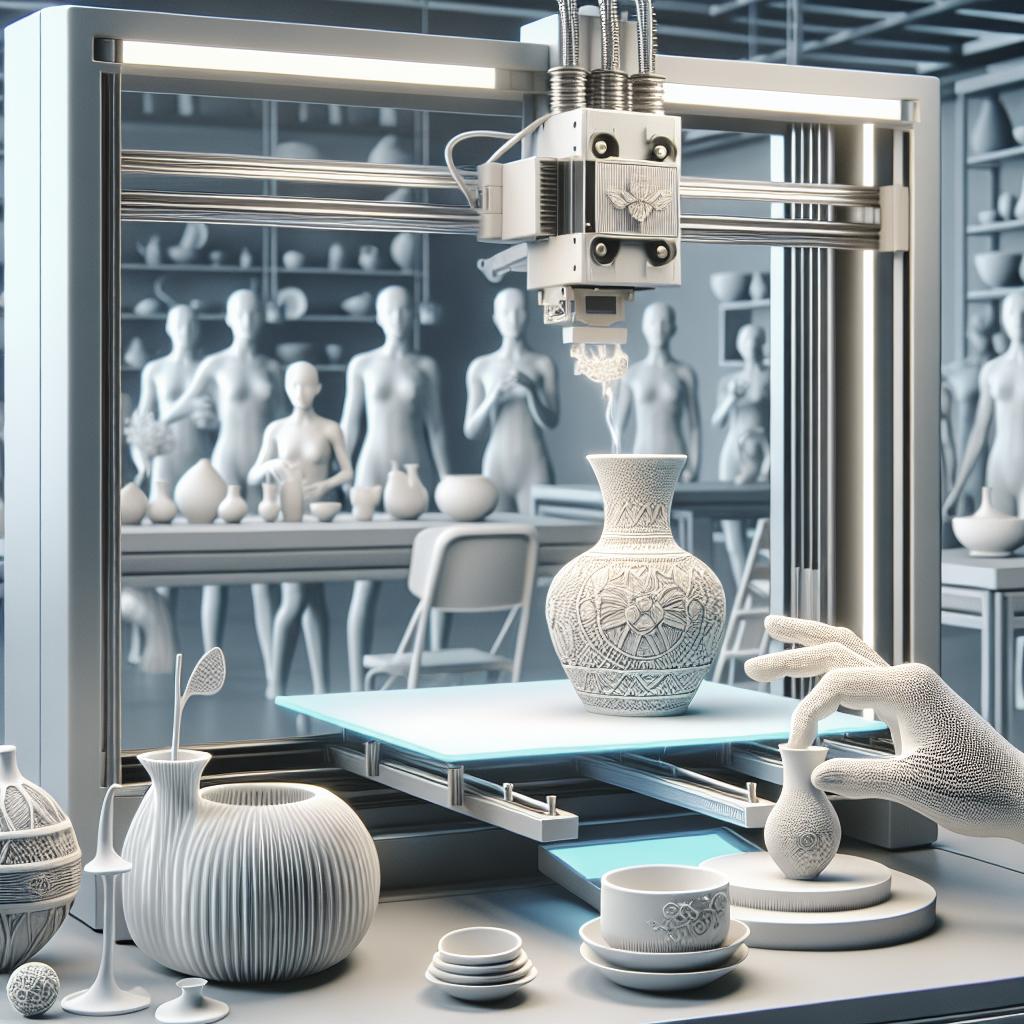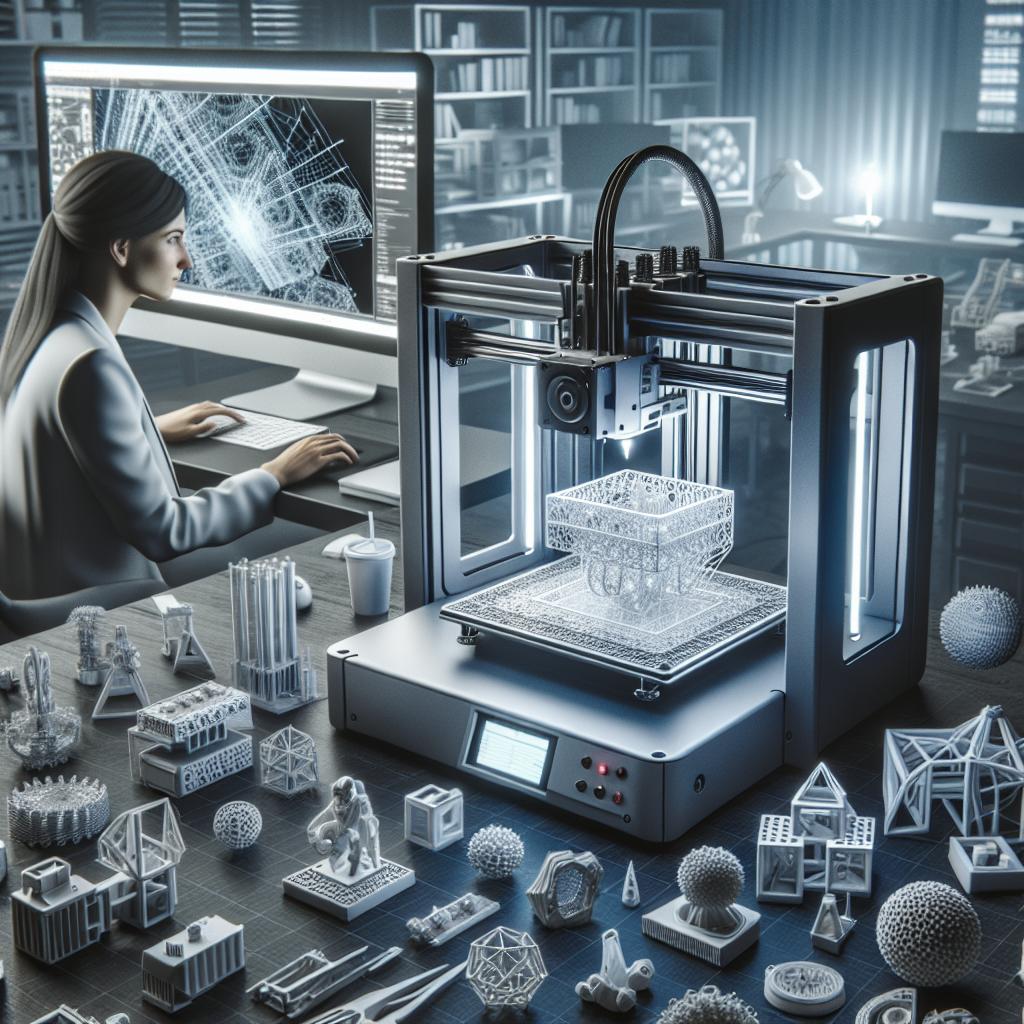<>
“`
Abstract
The advent of 3D printing technology has revolutionized various manufacturing processes, and ceramics 3D printing is no exception. This blog post delves into the future of 3D printing in ceramics, elaborating on the diverse methods used, the intricacies of post-processing, its extensive applications, and the projected market trends. Additionally, it outlines contributions, funding, ethical considerations, and data availability while concluding with key takeaways. The purpose is to provide readers with a comprehensive understanding of what lies ahead for ceramics 3D printing.
1. Introduction
3D printing, or additive manufacturing, has dramatically transformed how we approach manufacturing and design. Among various materials, ceramics hold a distinct place due to their unique properties such as high heat resistance, durability, and biocompatibility. This blog aims to explore the advancements, methods, commercial applications, and future potential of ceramics 3D printing.
By understanding the evolving landscape of 3D printing in ceramics, stakeholders in various industries can harness its potential for innovative applications. From medical implants to architectural elements, ceramics 3D printing is poised to disrupt traditional manufacturing and pave the way for new, unprecedented designs.
2. Ceramics 3D Printing Methods
There are several methods for 3D printing ceramics, each with its unique advantages and challenges. The most common techniques include Stereolithography (SLA), Selective Laser Sintering (SLS), and Fused Deposition Modeling (FDM). Each method employs a different approach to material deposition and solidification, influencing the final product’s quality and resolution.
SLA offers high-resolution prints by using a UV laser to cure a liquid ceramic-filled photopolymer. In contrast, SLS employs a laser to sinter powdered ceramics, creating a more robust structure but sometimes at the expense of finer details. FDM, though more common for plastics, has also been adapted for ceramics using ceramic filaments, providing a cost-effective option albeit with lower resolution.
3. Post-Processing and Finishing
Post-processing is a critical phase in ceramics 3D printing, significantly affecting the final product’s quality and functionality. This stage can involve various techniques such as sintering, glazing, and infiltration to enhance the printed object’s strength and appearance. Each method has specific requirements influenced by the initial printing technique used.
Sintering involves heating the ceramic object to just below its melting point, fusing the particles without liquefying them entirely. Glazing can add a smooth, aesthetically pleasing finish, making the object waterproof and more durable. Infiltration, where a second material fills the ceramic’s porous structure, can further increase the strength and wear resistance of the printed object.
4. Applications and Market
The applications of ceramics 3D printing span a broad spectrum, ranging from medical devices and implants to custom art and architectural elements. For instance, in the medical field, biocompatible ceramics are utilized for bone grafts, dental implants, and even drug delivery systems due to their inert and durable nature.
Architecturally, ceramics 3D printing enables bespoke designs that traditional methods would find challenging to produce. This translates into customized tiles, intricate sculptures, and innovative structural components. The market for ceramics 3D printing is expected to grow exponentially, driven by innovation and the need for customized solutions across diverse industries.
5. Lessons Learned
The potential of ceramics 3D printing is robust and multifaceted, with implications across several fields. Advances in printing methods, coupled with sophisticated post-processing techniques, have widened the scope of applications. Industries looking to adopt this technology must consider the initial investment, ongoing material costs, and the need for specialized skills. The growing market and expanding applications suggest that ceramics 3D printing will become more integral to various production processes in the near future.
Author Contributions
Lucas Martin researched and wrote the complete blog post, including the analysis of different 3D printing methods, post-processing techniques, and market applications. His strong background in research and writing was pivotal in developing a comprehensive overview of the topic.
Funding
This article was self-funded by Lucas Martin as part of his ongoing efforts to explore and write about emerging technologies and their future trends. No external funding was received for this research and writing.
Institutional Review Board Statement
This article does not contain any studies with human participants or animals performed by any of the authors. As such, an Institutional Review Board (IRB) statement is not required.
Informed Consent Statement
No human participants or personal data were involved in the creation of this article; therefore, informed consent was not applicable.
Data Availability Statement
Data sharing is not applicable to this article as no datasets were generated or analyzed during the current study. All information included in this article is available in the public domain and referenced accordingly.
Conflicts of Interest
The author declares no conflict of interest. The insights and information presented in this article are based purely on research and personal understanding of the topic.
References
Please note that given the format and purpose of this blog post, specific references are not provided. However, the information contained herein is gathered from a plethora of publicly available resources, industry reports, and academic articles on 3D printing and ceramics.
Share and Cite
If you found this article insightful, please feel free to share it on social media platforms using the hashtag #Ceramics3DPrinting. You may also cite this blog by including a link to the original post and crediting the author, Lucas Martin.
Article Metrics
Article Access Statistics
This section will be updated periodically to include metrics such as the number of views, shares, and comments. Stay tuned for the latest engagement figures.
| Section | Content Summary |
|---|---|
| 1. Introduction | Overview of 3D printing’s impact on ceramics manufacturing. |
| 2. Ceramics 3D Printing Methods | Details on SLA, SLS, and FDM techniques for ceramics printing. |
| 3. Post-Processing and Finishing | Explanation of sintering, glazing, and infiltration processes. |
| 4. Applications and Market | Insights into medical, architectural, and market trends for ceramics 3D printing. |
| 5. Lessons Learned | Key takeaways on the future and potential of ceramics 3D printing. |
“`

